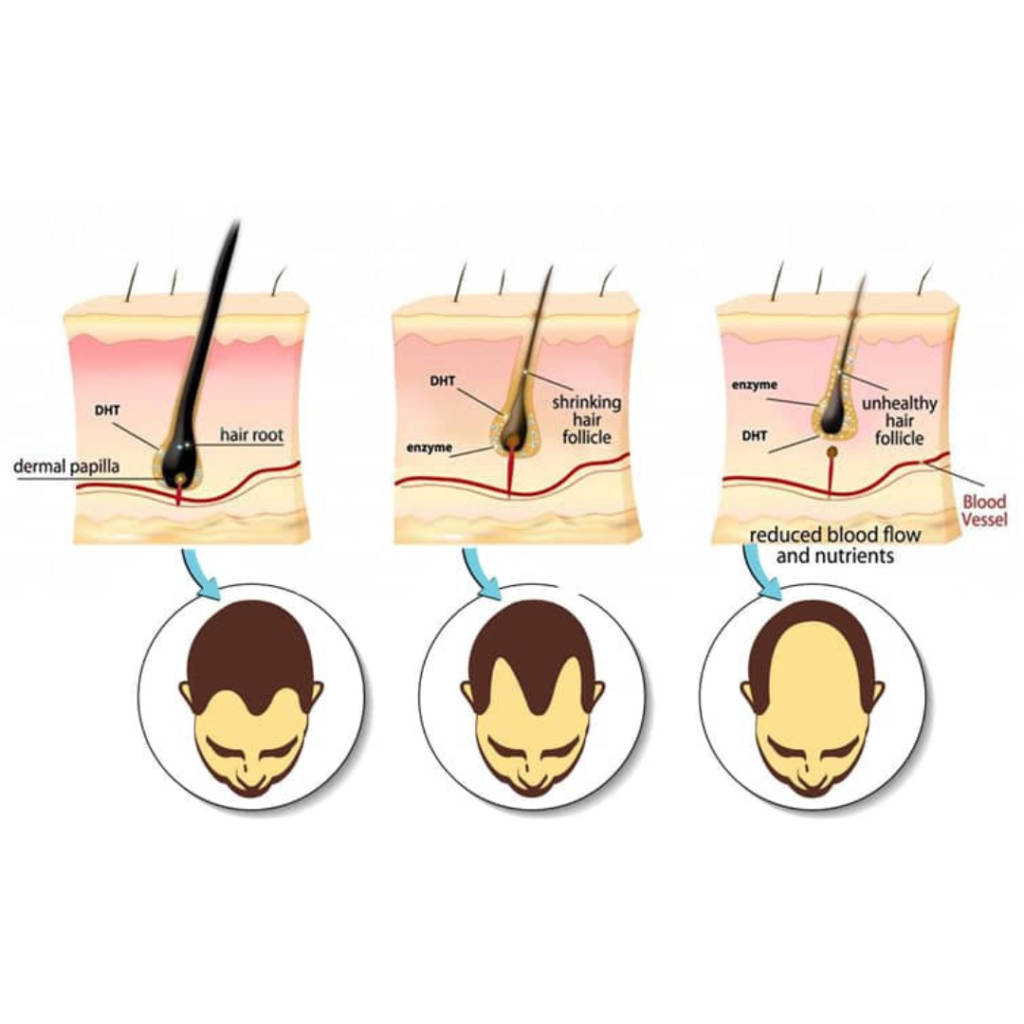No products in the cart.
February 29, 2024

Hair loss can be a distressing experience for many, and one of the primary culprits behind this common issue is the dihydrotestosterone (DHT) hormone. Understanding how to block DHT can be a game-changer in your journey to maintain a full and healthy head of hair. In this comprehensive guide, we’ll delve into the science behind DHT, explore its connection to hair loss, and provide practical tips on blocking this hormone for effective hair restoration.
Dihydrotestosterone, or DHT, is a hormone derived from testosterone through the action of an enzyme called 5-alpha-reductase. While DHT plays a crucial role in the development of male characteristics, an excess of this hormone can wreak havoc on hair follicles. DHT binds to hair follicles, causing them to shrink and eventually leading to the thinning and miniaturization of hair – a process known as androgenetic alopecia.
Before diving into strategies to block DHT, it’s important to recognize the signs of DHT-related hair loss. Common indicators include a receding hairline, thinning at the crown, and overall hair miniaturization. If you’re experiencing these symptoms, it’s time to take action.
1. Include DHT-Blocking Foods:
Incorporate foods rich in vitamins, minerals, and antioxidants that are known to block DHT. These include green tea, saw palmetto, pumpkin seeds, and tomatoes.
2. Omega-3 Fatty Acids:
Increase your intake of omega-3 fatty acids found in fish, flaxseeds, and walnuts. These can help regulate DHT levels and promote overall hair health.
1. Regular Exercise:
Engage in regular physical activity to help reduce stress levels. Stress is linked to increased DHT production, so adopting stress-reduction techniques such as yoga or meditation can be beneficial.
2. Scalp Massage:
Stimulate blood flow to the scalp through regular massages. Improved circulation can enhance nutrient delivery to hair follicles and inhibit DHT’s negative effects.
1. Choose DHT-Blocking Shampoos:
Opt for shampoos containing ingredients like ketoconazole or saw palmetto, known for their DHT-blocking properties.
2. Topical Treatments:
Consider using topical treatments containing minoxidil or finasteride, which are FDA-approved for promoting hair growth and inhibiting DHT.
1. Consult a Hair Restoration Specialist:
If your hair loss persists, seek the expertise of a hair restoration specialist. They can assess your condition and recommend personalized treatments, including prescription medications or advanced hair transplant procedures.
Blocking DHT is a multifaceted approach that combines dietary adjustments, lifestyle changes, and targeted hair care products. By understanding the role of DHT in hair loss and adopting these strategies, you can take proactive steps toward maintaining a vibrant and full head of hair. Remember, consistency is key, so be patient and persistent on your journey to healthier, more resilient locks.
Sent from my iPhone

We opened our clinic in Aventura, FL to offer top quality hair restorations at competitive prices.
Follow us on :
Copyright © 2024 American Mane | Powered by American Mane